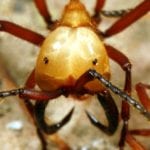 Movies and TV
Movies and TV  Movies and TV
Movies and TV  Health
Health 10 Miraculous Advances Toward Curing Incurable Diseases
 Miscellaneous
Miscellaneous 10 Undeniable Signs That People’s Views of Mushrooms Are Changing
 Animals
Animals 10 Strange Attempts to Smuggle Animals
 Travel
Travel 10 Natural Rock Formations That Will Make You Do a Double Take
 Movies and TV
Movies and TV 10 Actors Hidden in Your Favorite Movies
 Our World
Our World 10 Science Facts That Will Change How You Look at the World
 Pop Culture
Pop Culture 10 Incredible Female Comic Book Artists
 Crime
Crime 10 Terrifying Serial Killers from Centuries Ago
 Technology
Technology 10 Hilariously Over-Engineered Solutions to Simple Problems
 Movies and TV
Movies and TV 10 Movie Adaptions That Brought Popular Songs to Life
 Health
Health 10 Miraculous Advances Toward Curing Incurable Diseases
 Miscellaneous
Miscellaneous 10 Undeniable Signs That People’s Views of Mushrooms Are Changing
Who's Behind Listverse?

Jamie Frater
Head Editor
Jamie founded Listverse due to an insatiable desire to share fascinating, obscure, and bizarre facts. He has been a guest speaker on numerous national radio and television stations and is a five time published author.
More About Us Animals
Animals 10 Strange Attempts to Smuggle Animals
 Travel
Travel 10 Natural Rock Formations That Will Make You Do a Double Take
 Movies and TV
Movies and TV 10 Actors Hidden in Your Favorite Movies
 Our World
Our World 10 Science Facts That Will Change How You Look at the World
 Pop Culture
Pop Culture 10 Incredible Female Comic Book Artists
 Crime
Crime 10 Terrifying Serial Killers from Centuries Ago
 Technology
Technology 10 Hilariously Over-Engineered Solutions to Simple Problems
10 Of The Strangest Experiments Involving Creepy-Crawly Creatures
We love creepy-crawly critters. After all, they help us solve heinous crimes, show up in some pretty cool myths, and star in really disturbing videos that give us the heebie-jeebies. But we’re not the only ones who love insects and arachnids. Scientists love them too, and that’s why our multi-legged friends show up so often in scientific experiments. And, as you might expect, some of those experiments are pretty darn weird.
10Praying Mantis 3-D Glasses
It goes without saying that praying mantises are some of the coolest insects on the planet. Not only are they expert hunters, they’re the only invertebrates who see the world in 3-D—just like we do. And that intrigued researchers at the Newcastle University Institute of Neuroscience. In fact, many wondered if mantis 3-D vision works like ours or if there are completely different mechanisms involved.
Well, there was only one way to find out, and that was by putting mini 3-D glasses on mantises and showing them a 3-D movie. The glasses were glued in place with beeswax and the bugs were set in front of a computer. Instead of watching Avatar, they were shown little spinning circles and dancing Tetris blocks. By analyzing how the bugs reacted to circles dancing in front of their faces, scientists hoped to determine what was going on in the mantis’s head. And how did they react? By trying to grab that pesky little circle and tear it to pieces.
What’s the point of understanding 3-D mantis vision? Well, it’s safe to say John Connor wouldn’t approve. If researchers discover the way mantises process 3-D images is different than how we do it, that knowledge might help scientists unlock newer and simpler ways of developing stereoscopic vision for robots. So, when that Terminator with 20/20 3-D eyesight is chasing you down, blame it on the bugs.
9Dragonfly Backpacks
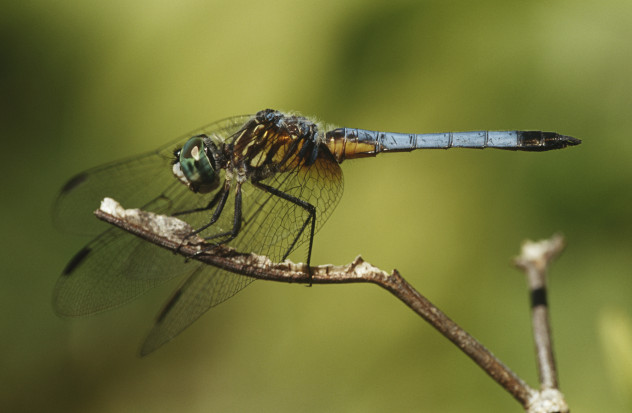
As far as invertebrates go, the dragonfly is a pretty deep thinker—at least when it comes to hunting. It has to figure out where its prey is going and calculate possible escape routes while positioning its body to snag its meal mid-flight. Sure, it sounds simple, but we don’t really understand how the dragonfly does it neurologically.
In fact, we don’t exactly know how an outfielder catches a fly ball, how a dog chases down a frisbee, or how a tennis player locks onto an incoming serve. According to Anthony Leonardo, a neuroscientist at the Howard Hughes Medical Institute, “We understand very little about how the brain integrates this sensory and motor information.”
And that’s where dragonflies come in. Since they have fewer neurons than a human, it’s possible to monitor their neural activity when they’re hunting. This might give us insight into how our brains work. But, in order to record what’s going on in there, Leonardo and his team had to develop a unique tool—the dragonfly backpack.
It’s basically an antenna and computer chip glued onto the insect’s back, but there’s no battery because that would make the backpack too heavy. Instead, it’s designed to operate on radio waves. The backpack records activity in the 16 neurons believed to be responsible for dragonfly movement, but don’t feel bad for the bugs because they have to lug around computer chips. Not only are the backpacks incredibly light, but the dragonflies are also having the time of their lives.
The insects are kept in a special room in Ashburn, Virginia that is designed to look like the outdoors. Trees and flowers are painted on the walls and the place is jam-packed with thousands of fruit flies. It’s an environment full of free food and no predators. Basically, it’s a dragonfly’s paradise. While the little killers chow down, the backpacks transmit neural activities back to a computer where scientists analyze the data. Hopefully, it’ll shed some light on how our brains work. If not, at least the dragonflies had a good time.
8Teaching Flies To Count
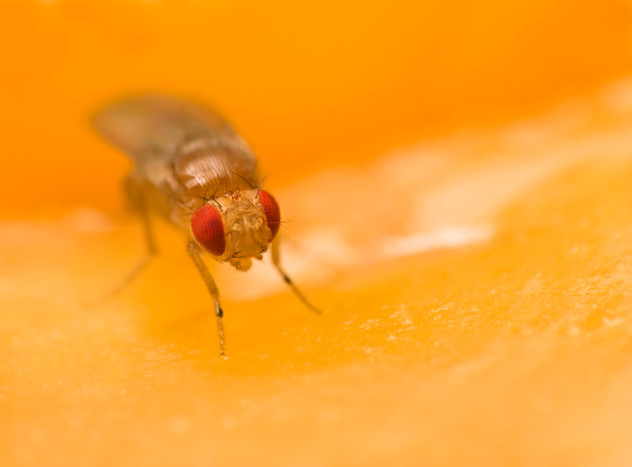
You’ve got to feel sorry for fruit flies. They’re the lab mice of the insect world. They’ve been X-rayed, infected with deadly bacteria, and some were even kept in total darkness for 57 years. That’s 1,400 generations of flies if you’re wondering.
Adding insult to injury, researchers from Wilfrid Laurier University and the University of California put a bunch of flies in a box and shook them like crazy. Only this time, the flies got something out of the deal. They learned to count.
The experiment was pretty simple. After loading a box full of fruit flies, the scientists flashed a bright light. Sometimes they flashed it twice, sometimes three times, sometimes four. If the light went off and on two or four times scientists would shake the box. If it flashed three times the flies were spared.
The flies didn’t enjoy bouncing back and forth, but the first generation of test subjects never made the connection between the light and getting knocked around. Neither did the second generation, or the third, or the fourth. But when the scientists reached the 40th generation of fruit flies everything changed.
Now, when the light flashed two or four times, the flies braced themselves for the oncoming earthquake. Something had changed in their brains, and now they understood the significance of numbers. That’s great for the flies, and it might even help scientists understand certain mathematical learning disabilities, but let’s hope those insects never escape the lab. Normal flies are irritating enough, much less super-intelligent ones that can count.
7What Do Butterflies Remember?

Ever wonder what happens to a caterpillar once it disappears into its cocoon? Well, if you cut open a chrysalis you’d find a bowl of caterpillar soup. When that squiggly worm seals itself inside that cocoon it just melts into a sea of pale white sludge. Everything from its legs to guts just liquefy and, five weeks later, a beautiful butterfly (or moth) emerges.
So how does the caterpillar go from slime pit to adult? When the caterpillar disintegrates, microscopic pieces of its body survive the transformation. Take its brain for example. While most of those little gray cells morph into stew, one piece survives and becomes the cornerstone for the butterfly’s new brain. But what about the wings? Well, if you sliced open a caterpillar (please don’t) you’d find thin structures under its skin. When the caterpillar pupates, these structures are kept safe against the cocoon walls, out of the slime, where they eventually grow into full-fledged butterfly wings.
However, there’s still one tricky question: Does the butterfly remember its life as a caterpillar? After all, most of its brain turned into an insect slushie. Well, Martha Weiss and Doug Blackiston of Georgeton University wanted to find out the answer so they filled a box full of tobacco hornworm caterpillars. Next, they filled the box with ethyl acetate, a nasty gas that smells like nail polish remover. Whenever Weiss and Blackiston gassed the caterpillars, they shocked the little bugs with an electric current.
This went on until the caterpillars decided they’d had enough and tried to escape whenever they smelled the ethyl acetate wafting their way. Once they’d developed a fear of the gas, the larvae went into that sweet deep caterpillar sleep and, a few weeks later, they were fully grown moths. And here came the crucial moment. Now that they emerged fully formed, would they still be afraid of the gas?
The answer was yes. When adults sniffed the ethyl acetate, they took off flying in the opposite direction. Those memories had survived in the little microscopic brain cell. They’d weathered the caterpillarpocalyse and, even though it looked like a completely new creature, the insect still remembered key moments from its past life.
6I Am Iron Bug

The scanning electron microscope (or SEM) is a pretty handy instrument. Scientists use it to get a close-up view of insects, but there’s one little problem. The microscope works by using a vacuum, and vacuums aren’t exactly insect friendly. Stick a bug in there and it’ll die in minutes. Even worse, that vacuum will dry those bugs up like a sponge in the Sahara. One moment, it’s a normal-looking insect. The next, it’s a shriveled-up prune.
However, in 2013, researchers at the Hamamatsu University School of Medicine in Japan made an interesting discovery. When they stuck mosquito larvae or ant larvae in the microscope’s vacuum, they turned into bug jerky. But whenever they put fruit fly larvae into the SEM, they created a new kind of mega maggot.
When scientists blasted the larvae with electrons, the critters developed iron-like skin. Fruit fly maggots are covered in a slime called ECS or extracellular substances. Incredibly, the microscope beam polymerized the ECS, creating a “nano-suit” about 50 to 100 nanometers thick. Sure, that’s 1,000 times thinner than a human hair, but it was thick enough to keep the larvae alive for up to an hour in the vacuum.
Inspired, researchers ran a second experiment on the mosquitoes and ants. They coated the larvae in Tween-20, a coating used on detergents and candy. Covered in this non-toxic compound, the larvae were put back in the microscope and, instead of drying out, the mosquitoes and ants developed their very own nano-suits.
Obviously, this solves the dehydration problem and will help scientists analyze bugs with the SEM for longer periods of time. However, some scientists think these polymer super suits might come in handy during space travel. Of course, it probably won’t work for humans as the process involves lots of ionizing radiation, but it does pose an interesting thought. Perhaps there are creatures other than fruit flies that can develop their own nano-suits. And, if they could somehow get into space, then maybe there’s life out there somewhere in the universe.
5Lasers, Wax, And Mind Control

In February 2014, researchers at the Howard Hughes Medical Institute (the same folks responsible for those dragonfly backpacks) unveiled the Fly Mind-Altering Device (FlyMAD), an awesomely named laser built to zap flies in the brain. Only instead of turning their minds into mush, the laser makes flies fall madly in love—with balls of wax.
So, how do you get a fly to date a chunk of wax? Well, first the scientists added heat-activated proteins to certain parts of the bug’s brain—specifically the regions in charge of sex and decision making. Next, they flipped on FlyMAD and blasted the fly in the head. The laser activated the proteins, turning the insect into a six-legged Romeo that would fall in love with anything nearby.
In this case, the object of Mr. Fly’s affection was a ball of wax. The insect circled the wax and vibrated its wings, which is fly-speak for “let’s make out.” Even after scientists switched FlyMAD off, the bug kept up its mating dance for 15 minutes before it realized it was hitting on wax and suddenly crept away in embarrassment.
What’s the point, you ask? Well, scientists hope they can figure out how all those fly neurons work together to make decisions. If researchers can learn how a bug’s brain works, that’s one step closer to understanding the mysteries of the human mind. Of course, researchers aren’t content simply screwing around with a fly’s love life. Next, they want to see what happens when they activate two opposite parts of the brain at the same time—like the neurons in charge of walking forward and backward.
4Spiders Hate Human Urine
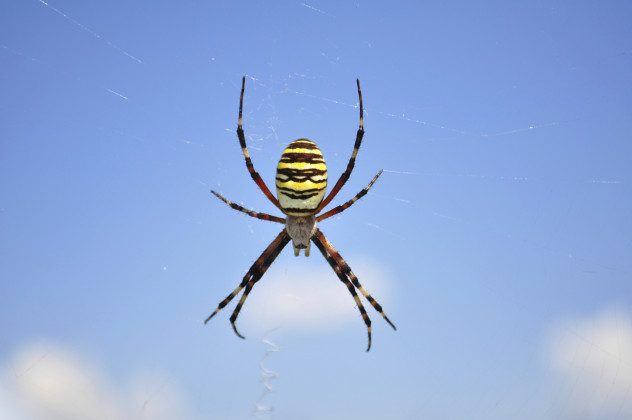
In 1948, a wacky pharmacologist named P.N. Witt sent a bunch of spiders on an acid trip. Witt had noticed garden spiders spun their webs between 2:00 AM and 5:00 AM. Hoping to shake up their schedule, he fed them flies loaded with drugs like LSD, hashish, and mescaline. While the spiders didn’t change their early morning hours, they did make a mess of their webs—especially the spiders on caffeine or chloral hydrate.
While the experiment was a failure, it actually inspired an even stranger study in the 1950s. Swiss psychiatrists noted people using LSD or mescaline were prone to hallucinations and personality changes, just like schizophrenics. They thought that maybe the schizophrenic body produced the same substances found in hallucinogenic drugs. But how could they test their theory?
With spiders and urine, of course. Researchers collected 50 liters of urine from 15 schizophrenics, concentrated the stuff, added some sugar for taste, and fed it to a group of lucky spiders. The idea was that if a schizophrenic’s body produced drug-like substances, the chemicals would show up in the urine and cause the spiders to spin really screwy webs. Of course, the theory was bonkers and the spiders went on weaving their webs like normal.
However, the researchers did make one interesting observation. As it turns out, spiders hate human urine. After the arachnids took just one drink, they ran off, furiously rubbing at their mouth parts, trying to scrub away the taste. According to the researchers, the spiders “could scarcely be persuaded to take another drop of the stuff.” In other words, even spiders have better sense than Bear Grylls.
3Insect Head Transplants
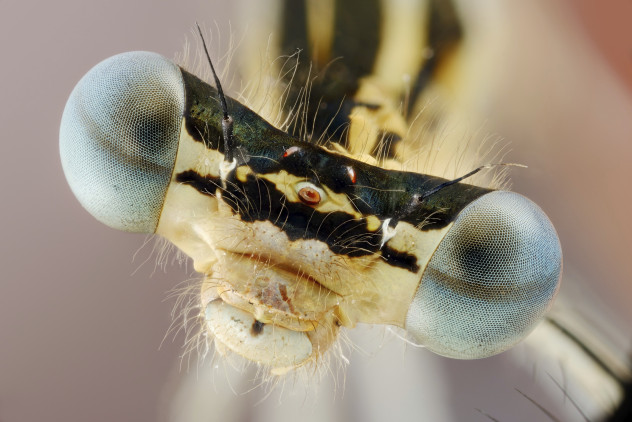
There’s something incredibly alien about insects. Maybe it’s their compound eyes, creepy antennae, or freaky mandibles. Or maybe it’s because they don’t need their heads to survive. For example, look at the cockroach. This guy can live for weeks without its head—but how?
Well, its circulatory system is radically different from ours so it won’t bleed to death when it loses its head. Secondly, it breathes through holes in its exoskeleton so it doesn’t need a mouth. And, most importantly, it can move without its brain thanks to clusters of nerve tissue throughout its body.
Even weirder, a cockroach head can last for hours on its own. In fact, keep it refrigerated and give it food and that little decapitated head will survive for quite some time. But what if you took a cockroach head and stuck it onto another cockroach body?
In 1923, a scientist named Walter Finkler decided to find out. While he didn’t use roaches, he experimented on several kinds of bugs like mealworms and butterflies. According to Esther Inglish-Arkell at io9, the guy took a pair of scissors, snipped a little here and there, and then started playing Frankenstein.
Evidently, those gooey heads and bodies just melded together and—voila—Finkler had created his own little monsters. And, according to his notes, the insects carried on like nothing super freaky had just happened. Finkler also noted that if the head belonged to a gal and the body belonged to a guy, the insect would act like a female.
What’s really amazing is that insect head transplants continue to this day. For example, scientists studying kissing bugs (South American insects that spread Chagas disease) often switch out heads to see how it affects their metabolism. They do the same thing to the larvae, and when they remove the heads the metabolism stops. But when they put a new one on, it kicks back up again. Insects are weird.
2The Lice Experiments Of World War II
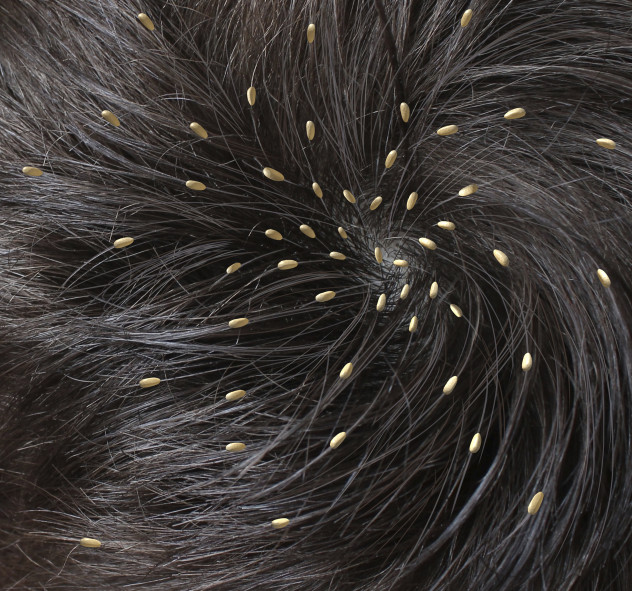
During World War II, conscientious objectors who wanted to help their country often volunteered to participate in bizarre tests like the Minnesota Starvation Experiment. In 1944, 36 men volunteered to go on a six-month starvation diet. The idea was to provide information on how to help the hungry people of Eastern Europe.
However, the Starvation Experiment wasn’t the first World War II test to involve conscientious objectors. The first took place in Campton, New Hampshire at a special base nicknamed “Camp Liceum.” The experiment involved 32 men, specially made underwear, and a lot of lice.
If you’ve ever had to coat your head in mayonnaise, you know lice are irritating creatures. But they’re also incredibly dangerous. These parasites can carry typhus, a disease that claimed millions of lives during World War I. Hoping to prevent a repeat, the Rockefeller Foundation and the US government opened a “Louse Lab” for the purpose of studying and destroying lice.
In order to determine which poisons worked the best, Louse Lab researchers recruited a group of conscientious objectors who were building roads in New Hampshire. The experiment was simple. Thirty-two men would wear underwear with lice (both adults and eggs) sewn into special patches. The subjects had to wear the undergarments for 18 days straight, and they couldn’t take off their clothes. Well, they could remove their undershirts if they got hot while building roads—they still had to work while covered in parasites.
After nine days of working, eating, and sleeping in lice, the men were given various delousing powders and, for the rest of the experiment, they rubbed themselves down every day with various chemicals. Only these powders irritated all their orifices and left their bodies burnt and scaly. These experiments were conducted three separate times and, when they were finished, the scientists still hadn’t found the perfect powder.
Actually, it gets worse. After scientists picked the two best powders of the bunch, the whole thing turned out to be a waste of time. Soon after the experiment ended, DDT was unleashed upon the world, and those second-rate powders just couldn’t compete.
1The Baffling Bee Sting Experiment

Up until now, the experiments on this list have all served useful purposes. After all, everybody wants to understand the brain, we all want to prevent typhus, and everybody thinks praying mantises look awesome wearing shades. However, this last experiment is the kind that makes you scratch your head and ask, “What was this guy thinking?”
The guy in question is Michael Smith, a grad student at Cornell University and either the bravest, craziest, or most masochistic scientist alive today. Smith is a honey specialist, he’s written a lot of papers on our hive-minded friends, and he works around these little guys all the time. Unfortunately, sometimes they get too close for comfort. One day, a bee crawled up his shorts and made its presence known—stinging Smith on the testicles.
Sure, it hurt, but not as much as Smith had expected. And that’s when he concocted the weirdest experiment in entomological history. He was going to find out which body part was the worst place to be stung by a bee, and he was going to experiment on himself.
Over 38 days, Smith subjected himself to 190 stings on 25 body parts. He was stung on his belly, nipple, wrist, palm, neck, and rear. And, every time a honeybee stuck its stinger into his skin, Smith rated the pain on a scale of 1 to 10. For example, the heel was a 5.0, the top of the head came in at 2.3, and the testicles were a 7.0.
What were the most painful spots? As you might expect, the penis was a nasty 7.3, but it wasn’t the worst. That honor went to the nose with a whopping 9.0. In fact, Smith went so far as to say, “If you’re stung in the nose and penis, you’re going to want more stings to the penis over the nose, if you’re forced to choose.” Remember that, guys.
Of course, letting a bee sting your testicles is nuts, but Smith almost took it even further. Believe it or not, he actually contemplated letting a bee sting him on the eyeball. Fortunately, his adviser talked him out of it.
If you want, you can friend/follow Nolan on Facebook or you can send him an email.
